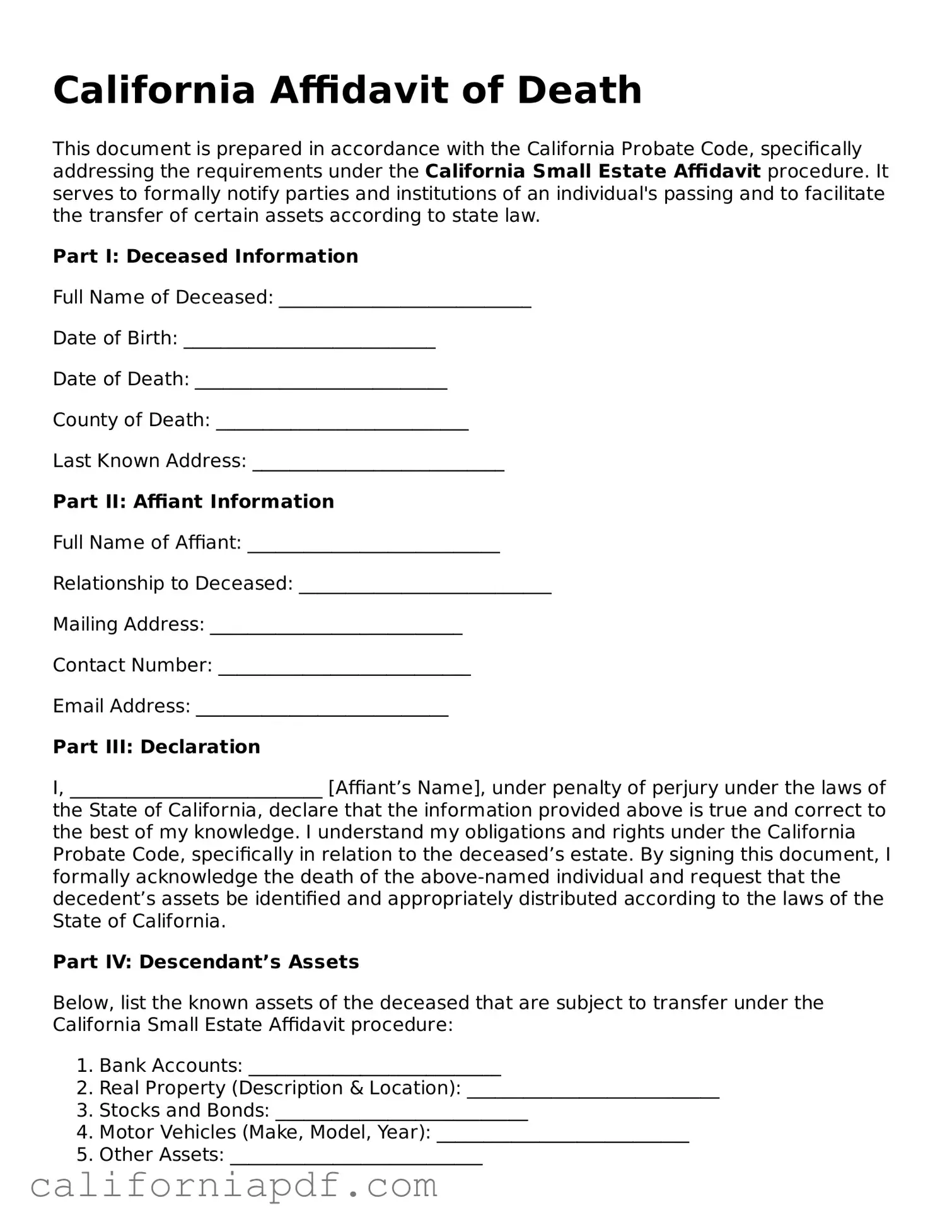California Affidavit of Death
This document is prepared in accordance with the California Probate Code, specifically addressing the requirements under the California Small Estate Affidavit procedure. It serves to formally notify parties and institutions of an individual's passing and to facilitate the transfer of certain assets according to state law.
Part I: Deceased Information
Full Name of Deceased: ___________________________
Date of Birth: ___________________________
Date of Death: ___________________________
County of Death: ___________________________
Last Known Address: ___________________________
Part II: Affiant Information
Full Name of Affiant: ___________________________
Relationship to Deceased: ___________________________
Mailing Address: ___________________________
Contact Number: ___________________________
Email Address: ___________________________
Part III: Declaration
I, ___________________________ [Affiant’s Name], under penalty of perjury under the laws of the State of California, declare that the information provided above is true and correct to the best of my knowledge. I understand my obligations and rights under the California Probate Code, specifically in relation to the deceased’s estate. By signing this document, I formally acknowledge the death of the above-named individual and request that the decedent’s assets be identified and appropriately distributed according to the laws of the State of California.
Part IV: Descendant’s Assets
Below, list the known assets of the deceased that are subject to transfer under the California Small Estate Affidavit procedure:
- Bank Accounts: ___________________________
- Real Property (Description & Location): ___________________________
- Stocks and Bonds: ___________________________
- Motor Vehicles (Make, Model, Year): ___________________________
- Other Assets: ___________________________
Part V: Acknowledgement
State of California
County of ___________________________
On ___________________________ [Date], before me, ___________________________ [Notary’s Name], personally appeared ___________________________ [Affiant’s Name], proved to me on the basis of satisfactory evidence to be the person whose name is subscribed to the within instrument, and acknowledged to me that he/she executed the same in his/her authorized capacity, and that by his/her signature on the instrument, the individual, or the entity upon behalf of which the individual acted, executed the instrument.
Witness my hand and official seal:
Signature of Notary Public: ___________________________
My Commission Expires: ___________________________
